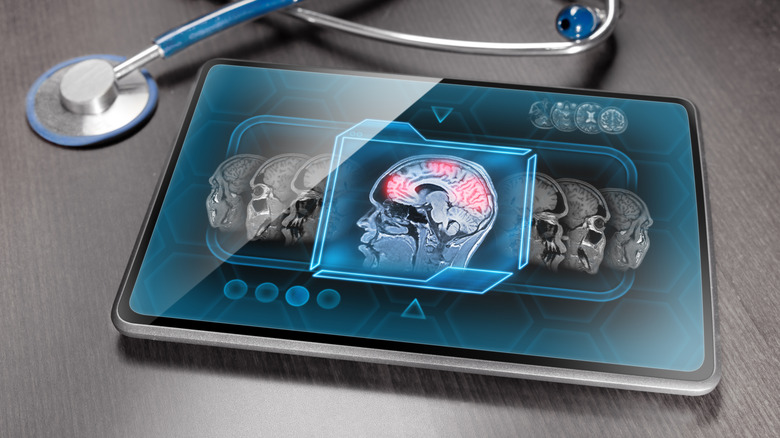The Simple Test You Can Try To See If You Have Aphantasia
What if your eyes could see, yet your mind was visually blind? That's the case for people with aphantasia. Aphantasia is a condition where the brain can't visualize images, and according to MindBodyGreen it impact between 1% and 5% of people. Aphantasia is different from a temporary bout of brain fog or bad memory — it's often present from birth and has no known cure (per Healthline).
People with aphantasia can't consciously access mental imagery, and some don't have vivid dreams. However, many do experience spontaneous, involuntary flashes of mental images, suggesting that the brain can still form mental images but that people with aphantasia struggle to deliberately recall them. This can affect one's ability to save visual memories. It can even make it difficult to recognize faces, though it shouldn't be confused with prosopagnosia, or "face blindness" (via NHS).
If it sounds a little confusing, that's because it can be — but a simple test may help determine if you have aphantasia.
This aphantasia test requires nothing more than an imaginary apple
TikToker @sweetbabyjosi, who creates short videos about her experiences living with aphantasia, shared a quick and easy test to see if you might have the condition. She recommends first closing your eyes and then picturing an apple, a familiar object that most can easily visualize. The TikTok creator explains that many people don't even need to close their eyes to "see" an apple in their mind. However, those with aphantasia can't visualize an apple — instead, they only see mental darkness.
@sweetbabyjosi says in her TikTok video that people with the condition may finally, after some struggle, be able to visualize an apple, but MindBodyGreen clarifies this, explaining that even being able to see an outline or vague image of an apple indicates that you likely don't have aphantasia. And likewise, only seeing black when you try to picture an object in your mind's eye doesn't automatically guarantee that you have the condition.
There are scientific ways to test for aphantasia
The simple apple test is a great start to see if you might have aphantasia, but the most effective method is to get an official test at your doctor's office. Tara Swart, M.D., Ph.D., told MindBodyGreen that a neurologist may use fMRI brain imaging to measure brain activity during visualization exercises. This may, potentially, detect aphantasia in some patients. A recent UNSW Sydney study also revealed that aphantasia may be diagnosable by watching people's pupils. When someone with aphantasia imagines a bright object, for example, their pupils won't constrict the way others' will.
Another reliable test to determine if you have aphantasia is The Vividness of Visual Imagery Questionnaire, available for free on the Aphantasia Network website. It treats aphantasia as part of a visual imagination spectrum, and by answering the questionnaire you can learn where you most likely fall on that spectrum.
If you do learn that you have aphantasia, know that your diagnosis isn't all bad. There are some surprising benefits, including possibly having a higher IQ and, as behavioral neurologist Adam Zeman told Science Focus, you might be better at living in the moment compared to those without the condition.


